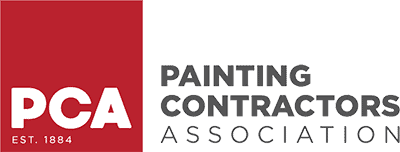Choosing the right paint color for your home can feel like navigating a maze. You’ve picked a color you love, only to find it looks completely different on your walls. The culprit? Lighting. Both natural and artificial lighting significantly impact how paint colors appear and, consequently, the overall aesthetics of your room.
At Queen City Painting and Decorating, we’re here to help you understand how lighting can transform your space. If you’re considering a fresh look for your home, especially in Hyde Park, interior painting requires careful consideration of these factors.
The Magic of Natural Light
Natural light, or daylight, is a dynamic element that changes throughout the day. Its impact on paint colors can be magical yet unpredictable. Here’s how different directions of natural light can affect your paint choices:
North-Facing Rooms
North-facing rooms receive the least natural light and tend to have more excellent, bluer light. This can make colors appear more subdued. Warm colors or those with a hint of yellow can counteract the coolness and make the space feel cozier. Consider how the cool light will interact with your color choice when considering a Hyde Park interior painting.
South-Facing Rooms
South-facing rooms are flooded with natural light throughout the day. This abundance of light can make colors appear more vibrant and warm. Light colors help keep the space airy, while darker shades can add a dramatic effect without making the room feel too dark.
East-Facing Rooms
East-facing rooms get the best light in the morning, which is bright and warm. As the day progresses, the light becomes cooler. This means your paint color might look different in the morning and afternoon. If you’re planning Hyde Park interior painting, consider how your color will adapt to these changes.
West-Facing Rooms
West-facing rooms have the opposite effect of east-facing rooms, with warmer light in the afternoon and evening. This can make colors look richer and warmer later in the day. Choose colors that maintain appeal in varying light conditions for a balanced look.
The Influence of Artificial Light
Artificial lighting is more consistent than natural light but still affects colors’ appearance. The type of bulbs you use can either enhance or alter the colors on your walls. Here’s a quick guide:
Incandescent Bulbs
Incandescent bulbs emit a warm, yellow light that can make reds, oranges, and yellows appear more vivid. However, they can also dull more excellent colors like blue and green. Consider how incandescent lighting will interact with your chosen hues when focusing on Hyde Park interior painting.
Fluorescent Bulbs
Fluorescent bulbs produce a cooler, more blue-toned light. This can enhance cool colors but might make warm colors look washed out or unnatural. If you have fluorescent lighting, test your paint colors under this light to ensure they still appeal to you.
LED Bulbs
LED bulbs are versatile and come in various color temperatures, from warm to cool. They are excellent for accurately representing paint colors. For Hyde Park interior painting, LED lighting can offer flexibility and consistency, making it easier to achieve your desired aesthetic.
The Art of Layering Light
For the best results, layer different types of lighting in your rooms. This includes ambient, task, and accent lighting. Each layer interacts with your paint color differently and can enhance the overall atmosphere.
Ambient Lighting
Ambient lighting provides general illumination for the entire room. It’s usually the primary source of light and sets the tone for how your paint color appears. Ensure ambient lighting complements your paint choice, especially for Hyde Park interior projects.
Task Lighting
Task lighting is focused on specific areas where activities such as reading or cooking occur. It can highlight particular spots and enhance the colors in those areas. When selecting task lighting, think about how it will impact the paint color it illuminates.
Accent Lighting
Accent lighting highlights architectural features or décor. It adds depth and dimension to a room, creating visual interest. Proper accent lighting can make your paint color pop, enhancing the overall aesthetic.
Practical Tips for Choosing Paint Colors
- Test Samples in Different Lights: Paint small swatches on your walls before committing to a color. Observe how they look in natural light during the day and under artificial light at night. This is especially crucial for Hyde Park interior painting, where the local climate can influence lighting conditions.
- Consider Light Reflectance Value (LRV): LRV measures how much light a color reflects. High LRV colors are lighter and reflect more light, making rooms feel larger and brighter. Lower LRV colors are darker and absorb light, creating a cozier feel.
- Use Neutral Base Colors: If you are unsure, start with neutral base colors. They are versatile and can adapt well to different lighting conditions. You can then add pops of color with accessories or accent walls.
- Consult Professionals: Don’t hesitate to seek expert advice. Professional painters have experience with how different colors and lighting interact and can guide you in making the best choice for your home.
Professional Hyde Park Interior Painting Matters!
Hyde Park is known for its beautiful homes and unique architectural styles. When it comes to Hyde Park interior painting, understanding the nuances of light and color can make a significant difference. The right paint can enhance the historical charm of older homes or add a modern touch to newer ones. At Queen City Painting and Decorating, we specialize in helping homeowners in Hyde Park achieve their desired look with precision and care.
Ready to transform your home with the perfect paint colors?
Let Queen City Painting and Decorating help you navigate the complexities of lighting and color. Contact us today at 513-643-5050 for a free estimate and personalized consultation, whether a single room or an entire home; our Hyde Park interior painting experts are here to bring your vision to life.
Your Content Goes Here



